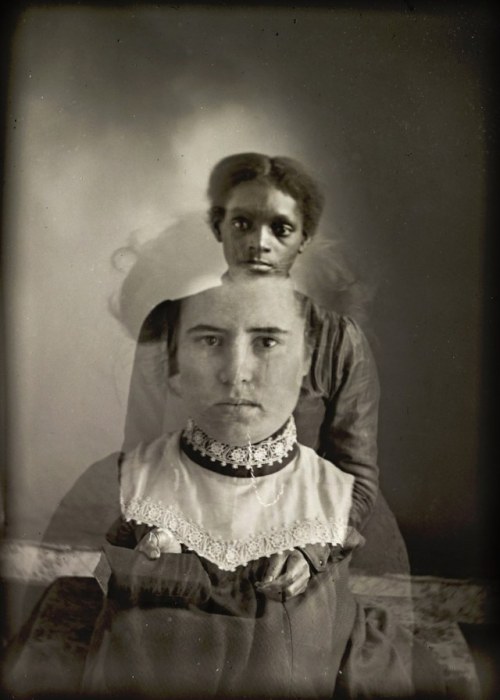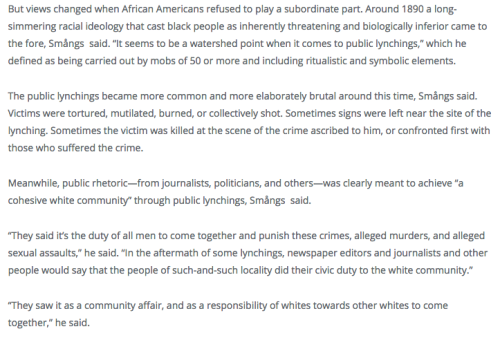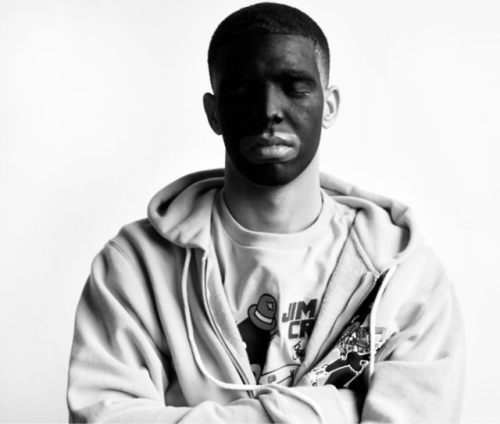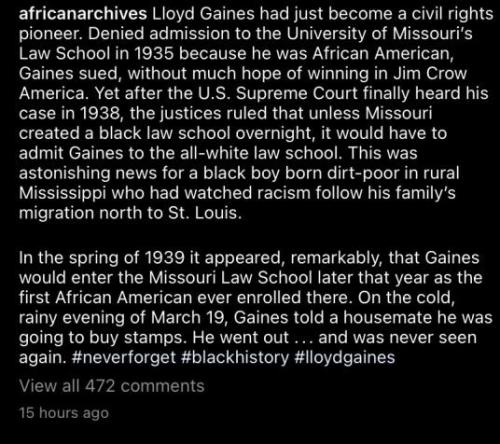#jim crow
Between the years 1897 and 1922, the photographer Hugh Mangum set up makeshift studios across North Carolina and Virginia, where he invited black and white portrait subjects to share space together. In an era of racial terror and Jim Crow segregation, Mangum’s work acts as a record of shared experience in the face of racist American customs and laws.
Read the full story, and view more of these dynamic portraits, here.
Post link

Read Alana Semuel’s fascinating look at the much looked-over period during the late 19th century when blacks and whites in the U.S. South lived near each other. Read ‘Segregation Had to Be Invented’
Often times when I drive through a canopy of trees I am reminded of the not so distant past and the grim nature of the American Public as they crow with adoration after stringing up yet another negro. It’s like a tradition and once they are done and everyone is good and satisfied with the conditions under which a “lesser” being died, they all stop, and smile, and pose for the camera like a holiday photo.
Just cover it up, put a white sheet over it, pretend like it never happened, and change the name of the same game.
Post link
The picture above is of US Soldiers captured during the Battle of the Bulge, WWII.
The following is from a soldier serving stateside:
“In April 1944 Corp. Rupert Trimmingham wrote Yank magazine. “Here is a question that each Negro soldier is asking,” he began. “What is the Negro soldier fighting for? On whose team are we playing?” He recounted the difficulties he and eight other black soldiers had while traveling through the South—“Where Old Jim Crow rules”—for a new assignment. “We could not purchase a cup of coffee,” Trimmingham noted. Finally the lunchroom manager at a Texas railroad depot said the black GIs could go on around back to the kitchen for a sandwich and coffee. As they did, “about two dozen German prisoners of war, with two American guards, came to the station. They entered the lunchroom, sat at the tables, had their meals served, talked, smoked, in fact had quite a swell time. I stood on the outside looking on, and I could not help but ask myself these questions: Are these men sworn enemies of this country? Are they not taught to hate and destroy…all democratic governments? Are we not American soldiers, sworn to fight for and die if need be for our country? Then why are they treated better than we are? Why are we pushed around like cattle? If we are fighting for the same thing, if we are going to die for our country, then why does the Government allow such things to go on? Some of the boys are saying that you will not print this letter. I’m saying that you will.”“
Post link
Photos by David Leyes
Leyes: “they were Drake’s idea and he is proud of them.”
www.davidleyes.com/portraits.html
Post link








